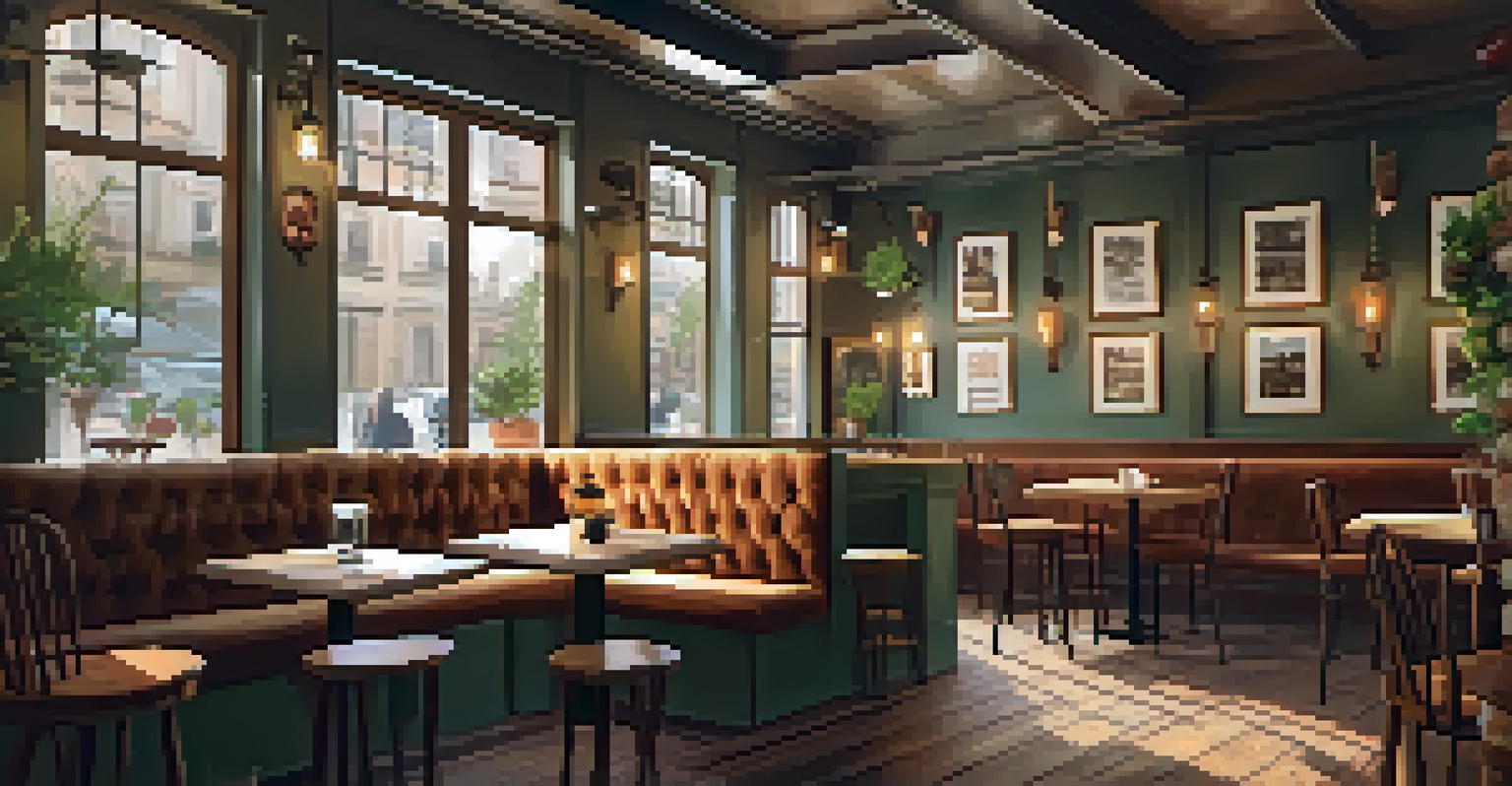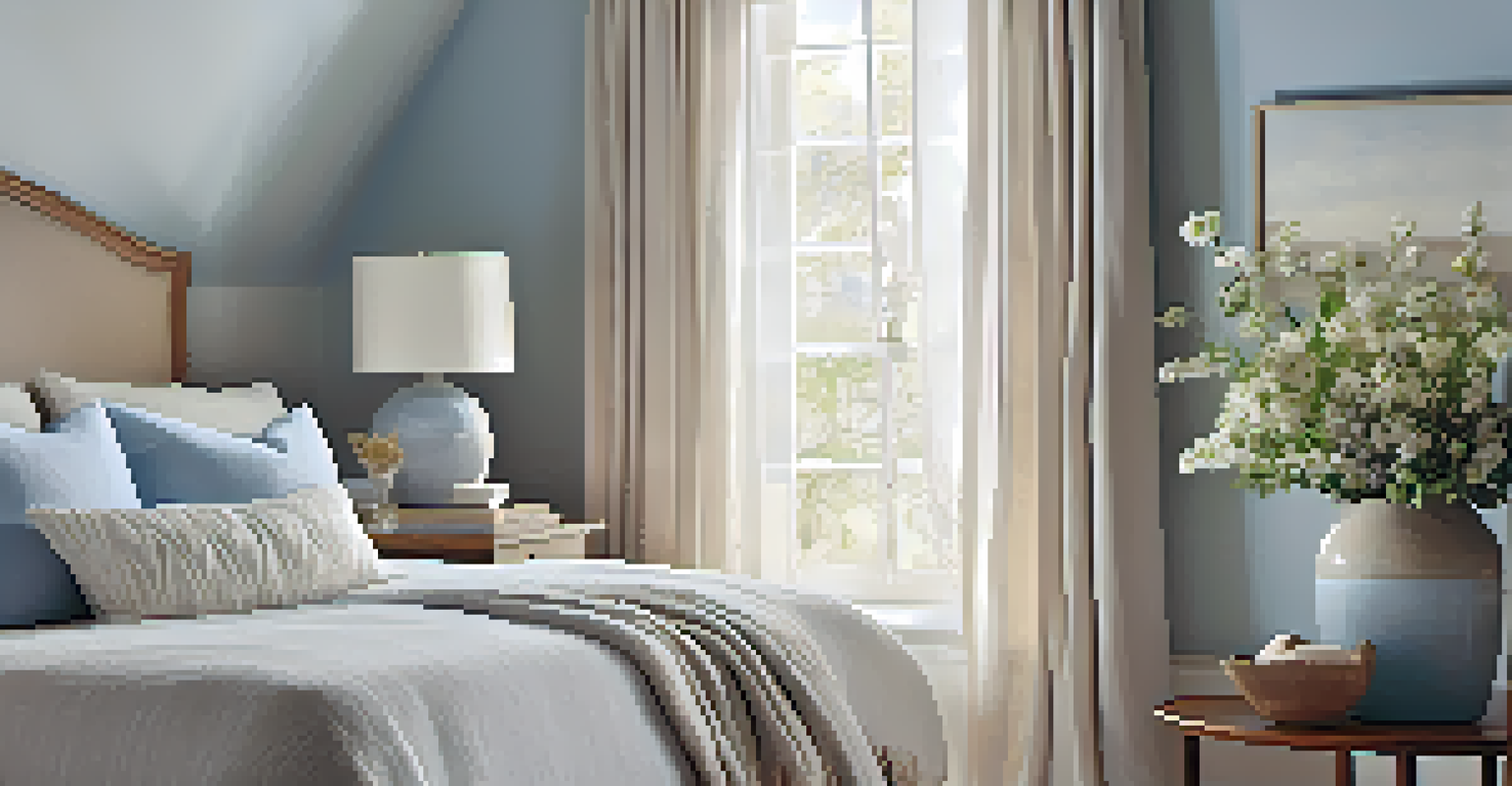Creating a Welcoming Atmosphere: Staging for Emotional Appeal

Understanding the Importance of Emotional Appeal
Creating a welcoming atmosphere starts with understanding emotional appeal. When people enter a space, their feelings are immediately influenced by their surroundings. This emotional connection can determine whether they feel at ease or on edge, making it crucial to consider how every element contributes to that experience.
The details are not the details. They make the design.
Think about how you feel when you walk into a cozy café versus a cold, sterile office. The warmth of colors, the arrangement of furniture, and even the scent in the air can evoke specific emotions. By consciously designing a space with these factors in mind, you can create an environment that invites connection and comfort.
Ultimately, a welcoming atmosphere is more than just aesthetics; it’s about crafting a feeling. Whether for a home, office, or retail space, understanding emotional appeal helps you tailor your staging strategy to resonate with the intended audience.
Choosing Colors that Evoke Warmth and Comfort
Colors play a significant role in how we perceive a space and can greatly impact emotional responses. Warm tones like soft yellows, earthy browns, and gentle reds can create a sense of coziness and intimacy. In contrast, cooler colors might evoke feelings of calm but can also come off as distant if not balanced correctly.

For example, imagine a living room painted in a light, sunny yellow. It instantly feels more inviting compared to a stark white room. By using color strategically, you can enhance the emotional appeal of any space, making it more welcoming.
Emotional Appeal Shapes Atmosphere
Creating a welcoming environment hinges on understanding how emotional appeal influences people's feelings about a space.
When staging, consider the mood you want to create and choose your color palette accordingly. A thoughtful selection of colors can turn any area into a space that feels warm and inviting, encouraging people to linger longer.
Incorporating Lighting for a Warm Ambiance
Lighting is another crucial element in creating a welcoming atmosphere. Natural light is often the most inviting, so consider maximizing windows and using sheer curtains to let the sunshine in. When natural light isn’t an option, soft, warm artificial lighting can mimic that inviting feel.
Simplicity is the ultimate sophistication.
Think about how you feel in a brightly lit store versus a softly lit restaurant. The latter often invites you to relax and stay longer, while the former can feel overwhelming. By using varied lighting sources like floor lamps, table lamps, and dimmers, you can create a layered lighting effect that enhances emotional appeal.
Additionally, consider the placement of lighting fixtures to highlight architectural features or cozy nooks. Thoughtful lighting not only beautifies a space but also contributes significantly to its warmth and emotional connection.
Utilizing Textures to Add Depth and Comfort
Texture adds depth and tactile comfort to any space, making it feel more inviting. Soft fabrics like plush throws, velvet cushions, and woven rugs can create a sense of warmth that is hard to resist. When staging, layering different textures can transform a flat, lifeless room into a cozy retreat.
Imagine walking into a room filled with smooth, hard surfaces versus one with a variety of textures. The latter, with its inviting pillows and warm blankets, beckons you to sit down and relax. This sensory experience is vital in creating emotional appeal and encouraging connection with the space.
Strategic Use of Color and Light
Choosing warm colors and thoughtful lighting enhances a space's emotional impact, making it feel inviting and comfortable.
Incorporating natural elements, such as wood and stone, can also enhance the overall ambiance. These materials not only provide texture but also evoke feelings of grounding and stability, further enriching the emotional atmosphere.
Creating Inviting Spaces with Furniture Arrangement
The arrangement of furniture can greatly influence how welcoming a space feels. An open layout encourages movement and interaction, while cozy seating arrangements can promote conversation and connection. When staging, consider how the flow of the room can foster a sense of community and comfort.
For instance, placing chairs in a circular formation invites people to engage with one another, while traditional rows can create distance. By thoughtfully arranging furniture, you can create pockets of intimacy where individuals feel comfortable enough to relax and connect.
Additionally, mixing different types of seating can cater to various preferences, making everyone feel included. A welcoming atmosphere is all about making people feel at home, and your furniture arrangement plays a pivotal role in achieving that.
Incorporating Personal Touches and Sentimental Items
Adding personal touches to a space can significantly enhance its emotional appeal. Items like family photos, sentimental artwork, or heirlooms tell a story and invite others to share in that narrative. These elements create a sense of warmth and familiarity that helps people feel more at home.
Consider how a well-placed photograph can evoke memories and emotions, making a space feel lived-in and loved. Incorporating personal items can also spark conversations, helping guests feel more connected to the environment and each other.
Personal Touches Foster Connection
Incorporating personal items and unique scents in staging can create familiarity and warmth, encouraging deeper connections with the space.
However, it’s important to strike a balance; too many personal items can overwhelm a space. Select pieces that resonate with you and enhance the overall atmosphere, ensuring the space remains inviting and comfortable.
The Role of Scent in Creating an Inviting Environment
Don’t underestimate the power of scent in creating a welcoming atmosphere. Scents can evoke strong emotions and memories, making them a vital part of any staging strategy. Whether it’s the aroma of freshly baked cookies or the subtle notes of essential oils, these fragrances can make a space feel more inviting.
Imagine walking into a home filled with the warm scent of vanilla or cinnamon. It instantly feels comforting and cozy, encouraging guests to relax and settle in. By incorporating pleasant scents, you can enhance the emotional impact of a space and create lasting impressions.

To maximize the effect, consider using candles, diffusers, or even fresh flowers. These elements not only beautify the space but also contribute to an overall sensory experience that welcomes everyone who enters.
Final Thoughts on Staging for Emotional Appeal
Creating a welcoming atmosphere through staging is all about emotional connection. By thoughtfully choosing colors, lighting, textures, and personal touches, you can craft spaces that invite warmth and comfort. Remember, it’s the little details that often have the most significant impact on how people feel when they walk into a room.
As you embark on your staging journey, keep in mind the emotions you want to evoke and tailor your approach accordingly. By understanding your audience and what makes them feel at home, you can create inviting environments that resonate deeply.
Ultimately, a well-staged space is one that feels authentic and reflects the values of those who inhabit it. With these strategies in hand, you’re well on your way to creating welcoming atmospheres that leave a lasting impression.